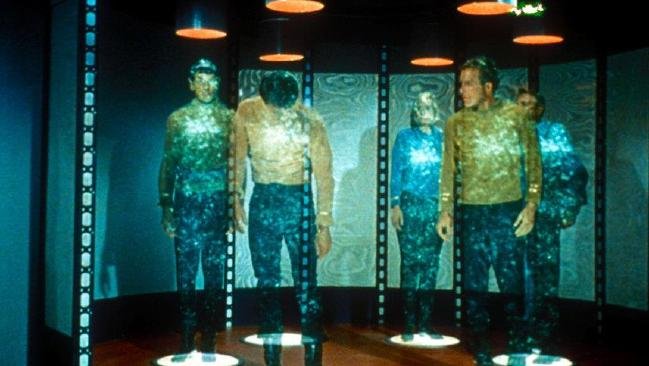Teleportation is possible, but how long will it be until humans can use the technology?

AFTER a long week at work, who wouldn’t want to push a button that will send you straight to your sofa with the remote control in arm’s reach?
In 1,000 years time, this might actually be a possibility, scientists believe.
It might sound like something straight out of science fiction, but experts are already able to teleport, reports The Sun.
Last year Canadian scientists successfully teleported tiny atoms faster than the speed of light.
But experts claim thanks to a complicated theory in quantum mechanics, entire objects and even humans can be moved in the same way.
The only thing stopping us is that it would take a humungous amount of energy and complex computing to do so.
But Saj Saini, a professor at Massachusetts Institute of Technology believes this could be possible as technology and energy sources improve.
“Never say never. in a little over a century mankind has advanced from an uncertain new understanding of electrons at an atomic scale, to reliably teleporting them across the room,” he said.
Teleportation isn’t as simple as sending an exact object halfway across the world.
As Saini explains in a recent TED talk, a baseball, for example, couldn’t be sent by radio waves, but all the information about it could.
If you can read what the quantum state of a baseball is in London, you could send that information around the world and imprint atoms with the same chemical elements in India, where they would be assembled to become the exact same ball.
Measuring and collecting this information is possible through a little-understood phenomenon called quantum entanglement — something that Einstein referred to as “spooky action at a distance”.
Last year scientists in Canada were able to send a tiny piece of information from one side of a city to another.
But there are a few problems.
The atoms would need to interact at proximity before being transported to a new site — so it’s not quite as simple as jumping in a Tardis.
“In principle, we could teleport objects — even people — but at present, it seems unlikely we can measure the quantum states of trillions and trillions in large objects and recreate them elsewhere,” Saini adds.
“The complexity of this task and energy needed is astronomical.”
So for now, we can reliably transport electrons in single atoms, but check back in 10,000 years time and it might be a different story.
HOW CAN WE TELEPORT THINGS?
Scientists are already able to “teleport” electrons in single atoms. Because that’s what we’re made up of — there’s good reason to believe we might be able to teleport one day, too.
It’s all thanks to the quantum state of atoms. In essence, an object isn’t being sent by radio waves — but all the exact information about it is.
That information can be imprinted at the point where it’s being teleported to — becoming an identical object. So a baseball’s quantum state could be calculated in London and transmitted to be imprinted in India.
The only problem is that it is very difficult to measure the quantum state, and the larger the object, the more atoms that would need to be read.
Plus, the amount of energy needed to complete the teleport would be “astronomical”.
This story first appeared on The Sun.
Hi! I am a robot. I just upvoted you! I found similar content that readers might be interested in:
http://www.news.com.au/technology/innovation/inventions/teleportation-is-possible-but-how-long-will-it-be-until-humans-can-use-the-technology/news-story/e7a972890365f35d1e1cc4129dfcc1eb